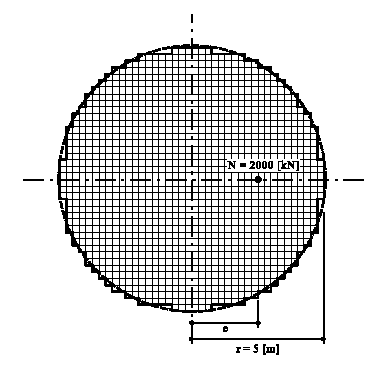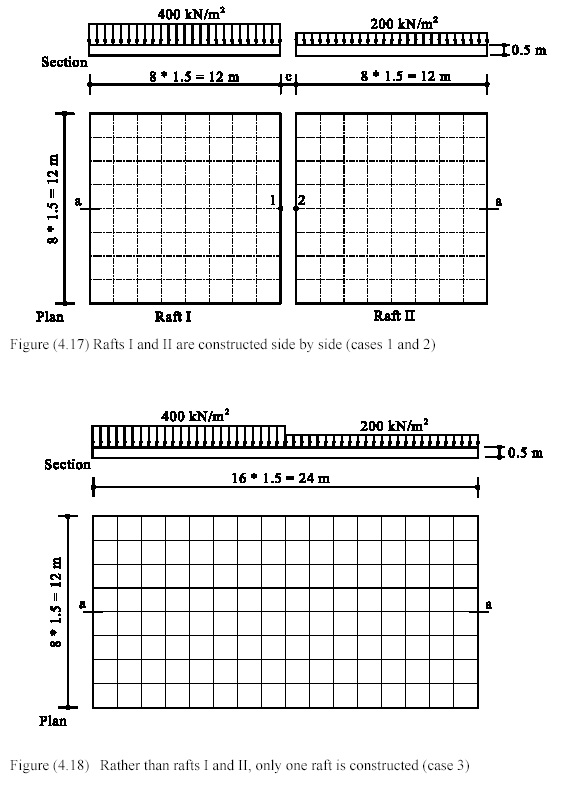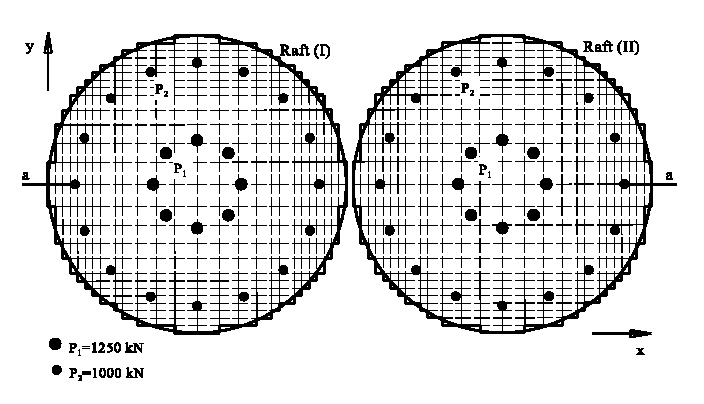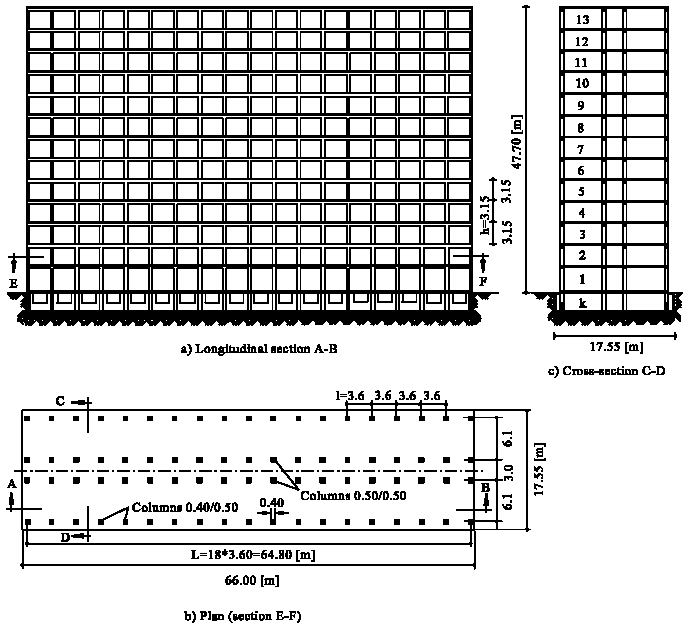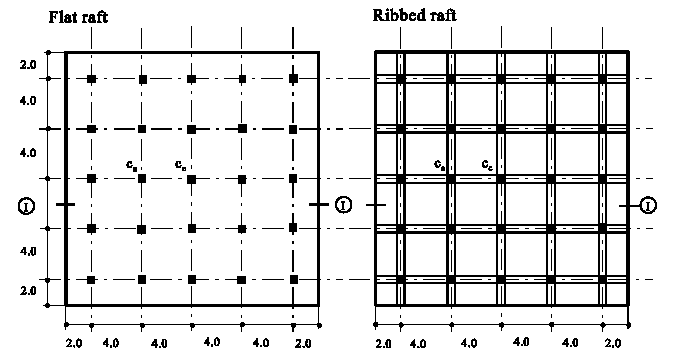- Super User1
- أمثلة تطبيقية
- الزيارات: 1762
Example (7.3): Circular foundation subjected to eccentric loading
Introduction
The simplest model for determination of the contact pressure under the foundation assumes a planar distribution of contact pressure on the bottom of the foundation (statically determined). In which the resultant of soil reactions coincides with the resultant of applied loads. If all contact pressures are compression, the foundation system will be considered as linear and the contact pressures in this case is given directly.
If the foundation subjects to big eccentricity, there will be negative contact pressures on some nodes on the foundation. Since the soil cannot resist negative stress, the foundation system becomes nonlinear and a resolution must be carried out to find the nonlinear contact pressures.
The nonlinear analysis of foundation for the simple assumption model has been treated by many authors since a long time, where several analytical and graphical methods were available for the solution of this problem. Pohl (1918) presented a table to determine the maximum corner pressure max qo for arbitrary positions of the resultant N. Hülsdünker (1964) developed a diagram using the numerical values of this table from Pohl (1918) to determine the maximum corner pressure max qo. For one corner detached footing, the closed form formulae cannot be used. Therefore, Pohl (1918) and Mohr (1918) proposed a method to estimate the neutral axis through the trial and error. Besides tables and diagrams, Graßhoff (1978) introduced also influence line charts can be used to determine the contact pressure ordinates. Peck/ Hanson/ Thornburn (1974) indicated a trial and error method to obtain the neutral axis position for rectangular footing subjected to moments about both axes. Jarquio/ Jarquio (1983) proposed a direct method of proportioning a rectangular footing area subjected to biaxial bending. Irles/ Irles (1994) presented an analytical solution for rectangular footings with biaxial bending, which will lead to obtain explicit solutions for the corner pressures and neutral axis location.
The determination of the actual contact area and the maximum corner pressure max qo under eccentric loaded foundation with irregular shape is very important. For T-shape foundation that is loaded eccentrically in the symmetry axis, Kirschbaum (1970) derived formulae to determine the maximum corner pressure max qo. For some foundation areas with polygonal boundaries, Dimitrov (1977) gave formulae to determine the foundation kern and corner pressure max qo. For the same purpose, Miklos (1964) developed diagrams. For general cases of foundation, Opladen (1958) presented graphical procedure.
Most of the analytical methods used to determine the contact area and corner pressures for eccentric loaded foundations are focused on regular foundations where irregular foundations can be analyzed only by graphical procedures. In this paper, an iteration procedure is presented to deal with nonlinear analysis of foundations for simple assumption model. The procedure can be applied for any arbitrary foundation shape and is suitable for computer programs. The following section describes this procedure.
Description of the problem
Another example is considered to show the applicability of nonlinear analysis of foundations using the program ELPLA for simple assumption model to different foundation types. The results of nonlinear analysis for a circular raft calculated by Teng (1962) are compared with those obtained by the program ELPLA.
A circular raft of radius r = 5 [m] is considered as shown in the Figure. The raft carries an eccentric load of N = 2000 [kN]. The position of the resultant N is defined by the ordinate e.


